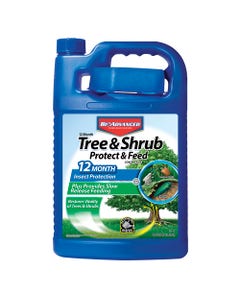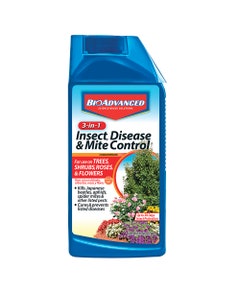

Japanese Beetle
Adult Japanese Beetles are ½-inch long, oval-shaped hard-shelled bugs with metallic green and copper wings. These beetles can often be seen in clusters of 20 or more hanging from different types of fruits and flowers.
Damage
Japanese Beetles feast on more than 400 plant species, feeding singly or in large groups between leaf veins and classically skeletonizing the foliage. They also feed on flowers and fruit. Favorite plants include roses, crabapples, pin oak, hibiscus, grapes, raspberries, linden, crape myrtle, sassafras, Japanese maple and Norway maple.
An adult Japanese Beetle has a short life span: 30-45 days on average. Females feed, mate and lay eggs and can repeat the process every 24 to 48 hours. At each egg laying, female Japanese Beetles deposit one to five eggs 2 to 4 inches deep in soil.
The white, wormlike larvae, or Grubs, (link to grub story) that hatch from the eggs are the nation's number one turf pests. Grubs devour grass roots, making it impossible for grass to absorb water and ultimately killing the grass. Their feeding produces irregular brown spots in a lawn. High numbers attract predators like skunks, moles and armadillos, which dig up turf to unearth grubs. Japanese Beetle Grubs also feed on organic matter in the soil and other plant roots.
Every summer, Japanese Beetles devastate lawns and gardens. Although they will seldom kill a tree or shrub, they can slowly weaken them, making them subject to secondary pests and diseases. It is estimated that damage and cost of controlling Japanese Beetles in the United States is over $460 million each year.
Location
Japanese Beetles are still spreading across the United States. Established populations occur most heavily east of the Rockies and in the Midwest. Small pockets of Japanese Beetles have been identified on the West Coast. Adult Beetles conquer geographical barriers by hitching rides on freight, vehicles or even air cargo. Eggs and Grubs travel in soil of nursery stock.
Similar or Related Pests
Lawn Grubs and leaf feeding Beetles
Cultural Solutions
- Change out plants on property to plants that are not host plants for the Japanese Beetles.
- Floral-scented Japanese Beetle traps are not very effective, often attracting more Beetles than they capture. If you use them, place the traps as far from host plants, such as roses, as possible.














